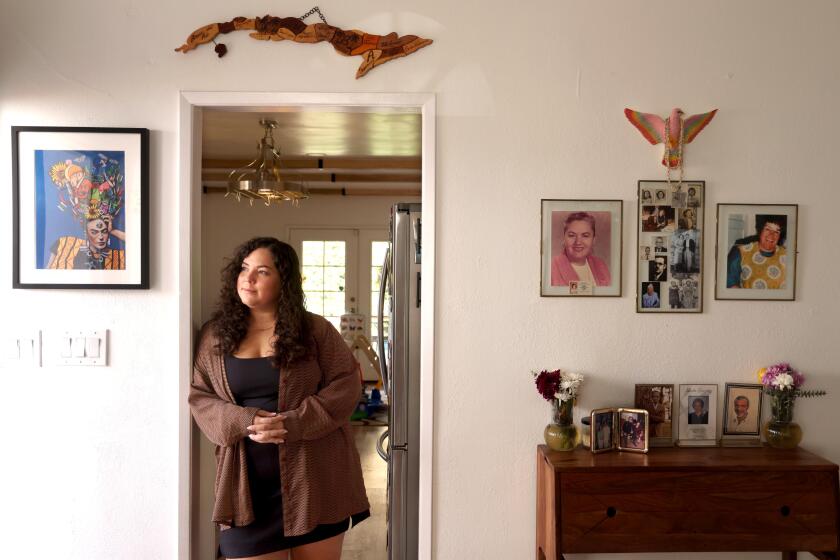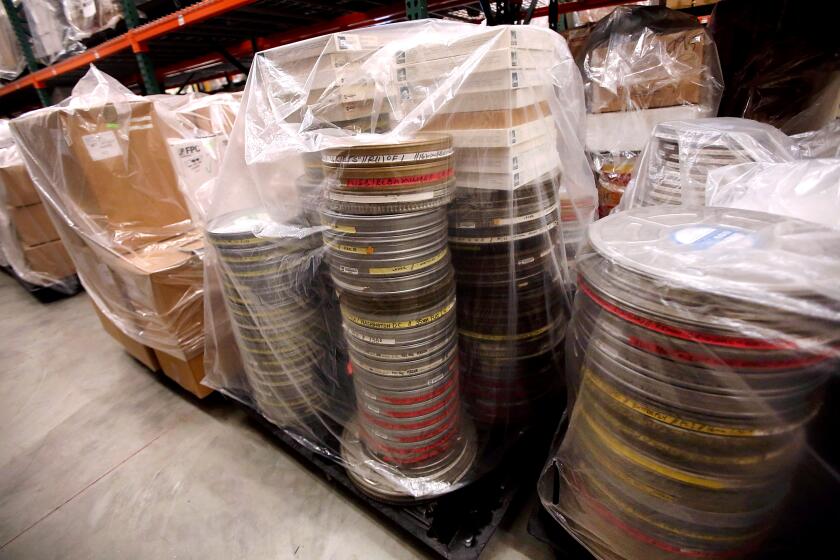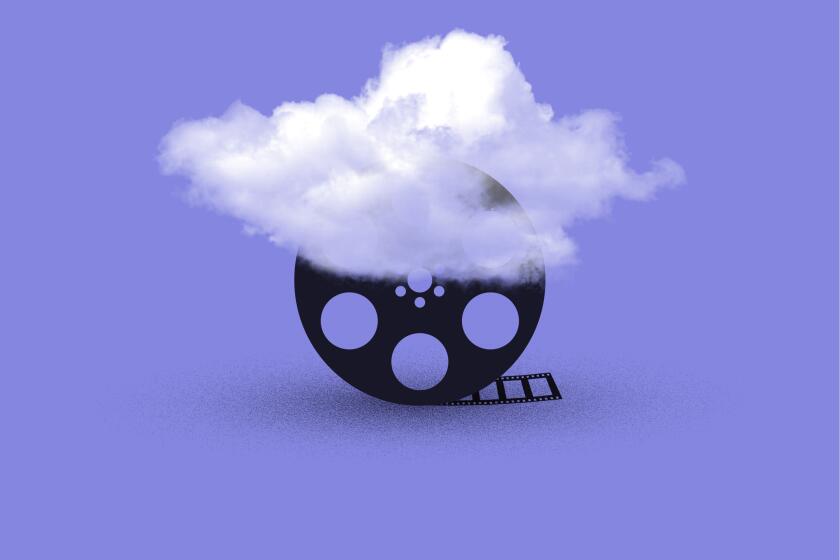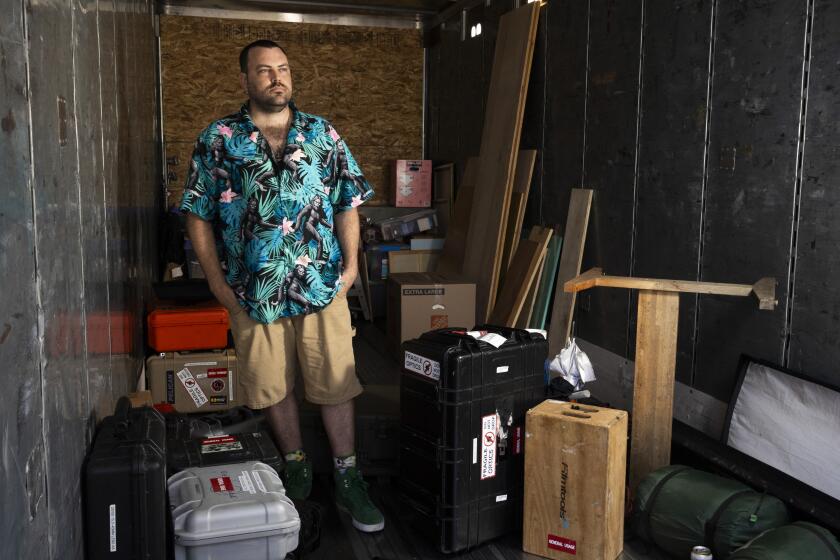For Hollywood crews, the mantra was ‘Survive till ’25.’ So now what?
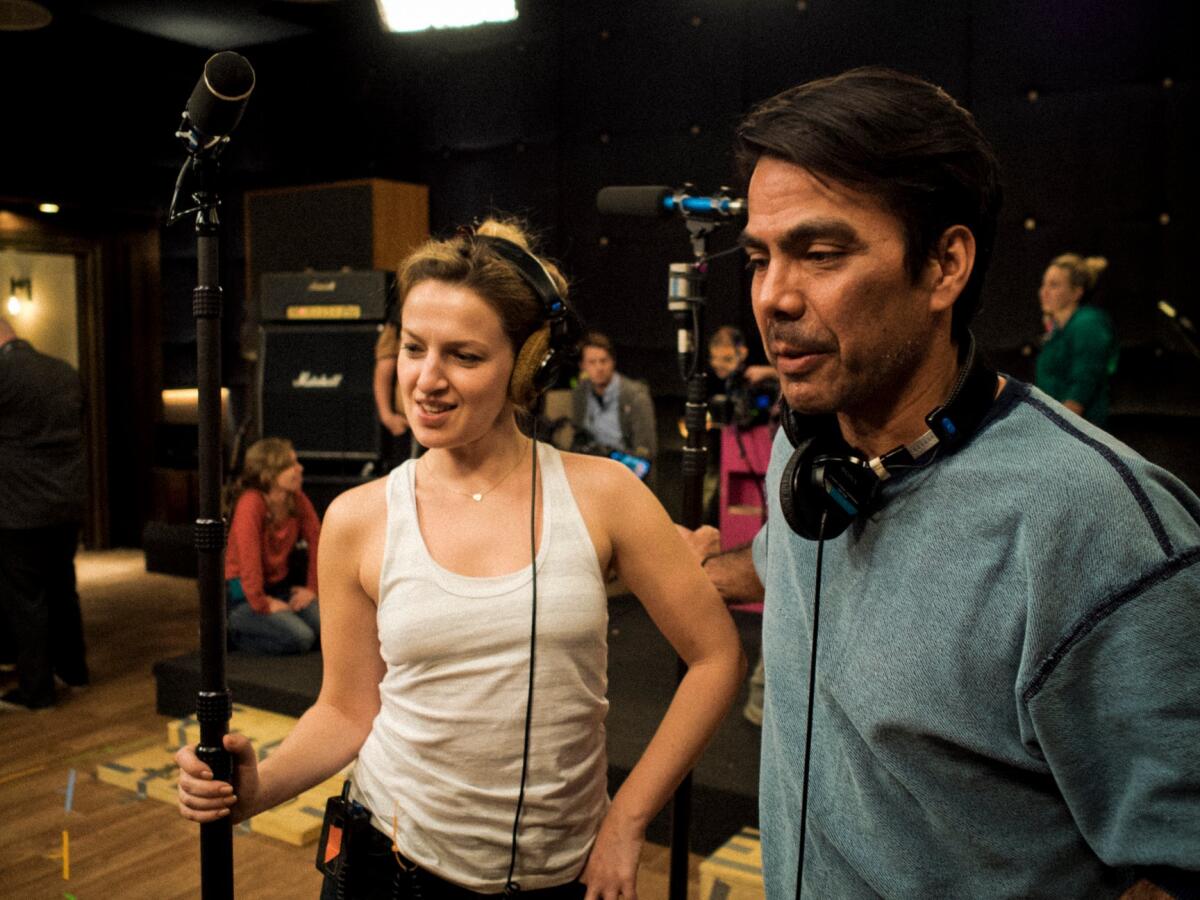
- Share via
- One of The Times’ most-read articles in 2024 centered on below-the-line TV and film workers struggling in the Hollywood slowdown.
- We tracked down the same workers to find out: Where are they now? Are they back to work?
- Despite the industry mantra, employment anxieties linger as we head into the new year.
Six months ago, Heather Fink hit a wall. After more than two decades in the film industry, the NYU film school grad had built a steady, if unpredictable, career as a freelance sound utility worker on film and TV sets while chasing her real dreams of writing and directing. But with the dual strikes by writers and actors bringing production to a halt, the work dried up, her bills piled up and her anxiety spiraled.
“I was in such a terrible place,” she says. “I needed anything to pick me up and pay off my debt. I couldn’t live that way anymore.”
In July, a friend reached out with a potential lifeline: a full-time position in the sound department on ABC’s “Grey’s Anatomy,” now in production on its 22nd season. “I enthusiastically said yes,” Fink says. “I couldn’t feel more grateful.”
When The Times first spoke with Fink in May, she was still reeling from the fallout of the work stoppages, like thousands of her fellow crew members. Now, as the industry struggles to regain its footing, we’ve checked back in with her and a few others from that earlier story to see how they’re faring. Some, like Fink, have found a measure of stability, however tenuous. But for many below-the-line workers, the prolonged strikes and rising costs of living have forced difficult choices: leaving L.A., pivoting to new careers or scraping by with freelance gigs and side hustles.
To keep spirits up in a year marked by unrelenting uncertainty, many crew members have clung to the mantra: “Survive till ’25.” But with 2025 fast approaching, even those who’ve stayed afloat are bracing for what comes next.
Hollywood veterans said they feel an obligation to ‘speak truth to facts’ with people trying to break into the entertainment industry right now.
Keith Dunkerley, a director of photography and camera operator, counts himself among the lucky ones. After working just 18 days during the first five months of the year, Dunkerley, who supported his family during the strikes by tapping savings and taking handyman gigs on Taskrabbit, landed a full-time job as B-camera operator on the medical drama series “Doctor Odyssey.”
“I’ve been very lucky, unlike a lot of friends,” Dunkerley told The Times via email. “So many friends are still out of work or really slow. Fingers crossed it picks up next year.”
2023’s dual strikes by writers and actors created a dry spell for everyone in Hollywood. Crew members are still feeling the aftershocks.
The challenges facing Hollywood’s workforce predate the strikes. Streaming platforms, squeezed by shrinking subscriber numbers, had already pulled back on original programming, while studios slashed budgets and cut jobs. The strikes only deepened the slowdown: Film and TV production in L.A. remained 5% lower in the third quarter of 2024 than during the same period the previous year, according to the nonprofit FilmLA.
In October, Gov. Gavin Newsom proposed more than doubling the state’s annual tax credit program in an effort to stem the outflow of productions to lower-cost states or countries. But even if the measure is approved, the increase wouldn’t take effect until mid-2025, leaving many L.A.-based crew members wondering if help will arrive too late.
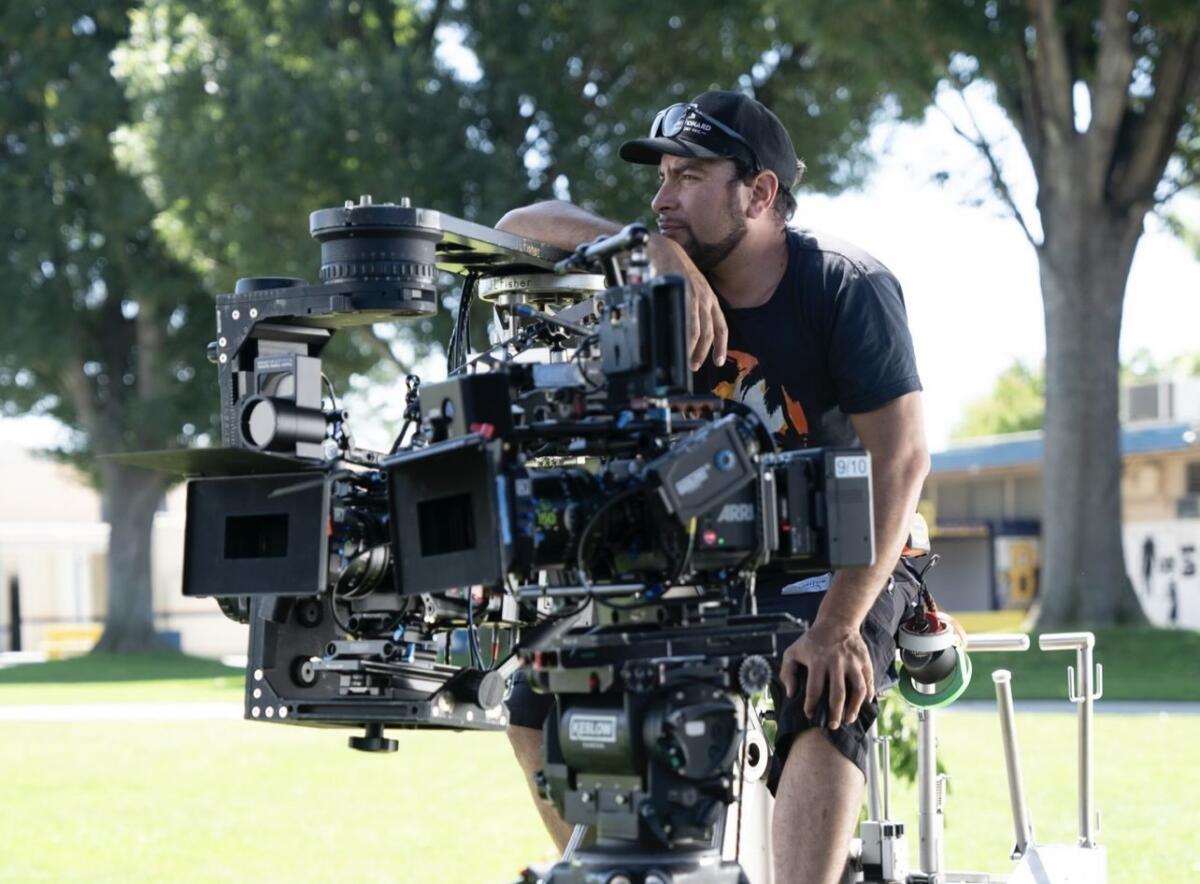
Diego Mariscal, a dolly grip with 25-plus years of experience who has worked on “The Mandalorian” and “Spider-Man: No Way Home,” sees signs of a rebound: full parking lots at studios, soundstages booked solid. But the recovery is far from even.
“There’s work out there, but it’s not being spread around,” Mariscal says. He considers himself fortunate to have stayed employed since the strikes ended but says that hiring has been concentrated among a shrinking pool of workers, rolling back gains in diversity and shutting out newcomers.
“Coming off the #MeToo movement, people were specifically starting to make it a point to get women and people of color on their crew,” Mariscal says. “The doors were a little bit more cracked open earlier, and now they’re slowly closing more and more. I think it’s very subconscious. I don’t think people mean to do it, but it’s just going back to that people are starting to take care of their own.”
The Academy of Motion Picture Arts and Sciences is restructuring its archive and library, cutting 16 staff members as part of a strategic effort to consolidate preservation efforts.
The scarcity of opportunities has created palpable tension on set, Fink says: “People are getting meaner. Full-time crew members tend to be kinder because they know how lucky they are, but the ones who aren’t working as much — that’s all they can talk about. It’s deeply depressing and it’s dividing people.”
Mariscal, who also runs Crew Stories, a private Facebook group with more than 96,000 members, has witnessed firsthand how deeply the industry’s contraction has affected its workers. Originally created in 2017 as a space for crew members to share funny anecdotes and positive news, the group has evolved through the pandemic and strikes into an essential outlet and communal resource for those grappling with financial instability.
This year, the pleas for help have been relentless, with Mariscal often juggling roles as “investigative journalist, detective and therapist.”
“Someone asked me to help with a GoFundMe to get their car out of an impound lot. An hour later, someone else is like, ‘I broke my back on a stunt and I don’t know if I’ll ever be able to walk and I need stem cell [therapy] and I want to start a GoFundMe.’ It’s like, who do I help? In the end, it comes down to me.”
The emotional toll has rippled across the industry. Suicide among below-the-line workers is difficult to quantify, and many believe it’s under-reported. “I know people who killed themselves,” Fink says. “They didn’t see hope. They didn’t see a use for what they do anymore. You could ask around, and almost everyone knows someone.”
The slow resumption of film and TV work after the Hollywood strikes is causing stress in the industry. Mental health professionals share how to cope.
“One thing you never hear about, even with the suicides, is the impact it has on the people closest to them,” says Mariscal. “And [the despair] goes deeper. Someone gets hurt and they develop a drinking problem and start lashing out or hitting their spouse. It’s all very under-reported. You only hear about it if you’re inside the industry.”
These struggles are compounded by a growing divide between Hollywood’s creative and working classes, a rift widened by productions moving overseas in pursuit of tax incentives and lower labor costs.
“I believe in the power of unions, and I supported the strikes enthusiastically,” Fink says. “But on the other side of the strikes, we’re in a terrible place. The working class put their last good years on the line, and now productions are moving overseas. The people we fought for aren’t fighting to keep work here.”
“Dune: Part Two” and “Anora.” Beyoncé, Sabrina Carpenter and Chappell Roan. “The Vince Staples Show” and “The Completely Made-Up Adventures of Dick Turpin.” “Kimberly Akimbo” and “Waiting for Godot.” Our critics share their favorites of 2024.
Advancements in AI and virtual production are magnifying those anxieties. On projects like Disney’s 2019 CG-animated “The Lion King” and the studio’s upcoming “Snow White” remake, Mariscal witnessed how digital environments replaced traditional sets, eliminating the need for entire crew departments.
“It was drastically different from what you would normally see on a film set,” he says. “They still needed the feeling of a human moving the camera around. I remember being like, ‘I guess I made the cut.’ But there was no sound team, no makeup, no construction — just the bare bones of what it takes to make something.”
During the strikes, Mariscal considered leaving the industry altogether and explored the idea of starting a power-washing business. Having bought a home in Eagle Rock at the bottom of the market in 2010, he feels fortunate for now but knows stability could vanish in an instant.
“For now, I’m needed in that world,” Mariscal says. “But they’re going to have an AI program that can mimic handheld shots, crane moves — every camera move ever made. When that happens, I’ll be out of a job. It could happen in the blink of an eye. It might already be happening and I don’t know about it.”
With Hollywood production activity and employment down while the cost of living rises, some film and TV workers are leaving Los Angeles — and California.
Earlier this year, Fink had been ready to leave Los Angeles entirely, planning to return to New Jersey, run for local office and use her creative skills to raise awareness about caregiving after her father’s stroke. For now, her job on “Grey’s Anatomy,” which runs through March, has given her a reprieve.
“I’ll be covered for some time,” she says. “But I’m preparing myself for the unknown. None of this feels reliable — not my job, not my department, not even the country.”
As Hollywood adjusts to its new reality, Fink is holding on the best she can.
“I don’t have time for my dream right now when I’m just trying to survive,” Fink says. “But I’m not giving up. There’s too much value in what we do. We just have to adapt.”
More to Read
Only good movies
Get the Indie Focus newsletter, Mark Olsen's weekly guide to the world of cinema.
You may occasionally receive promotional content from the Los Angeles Times.
